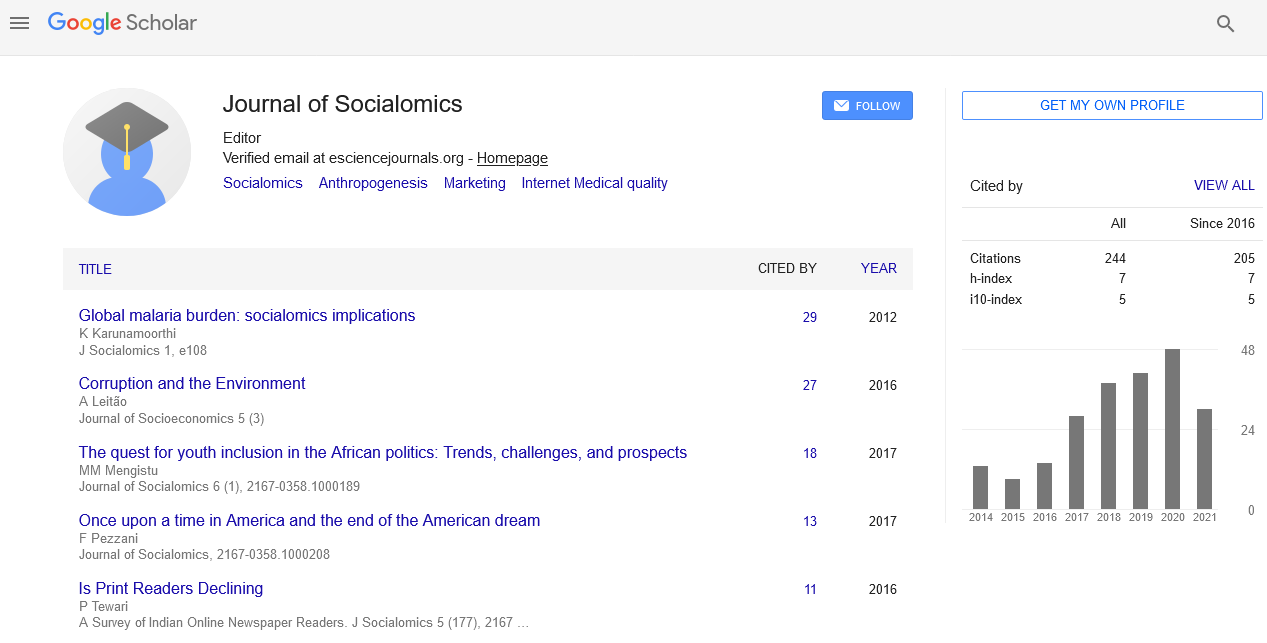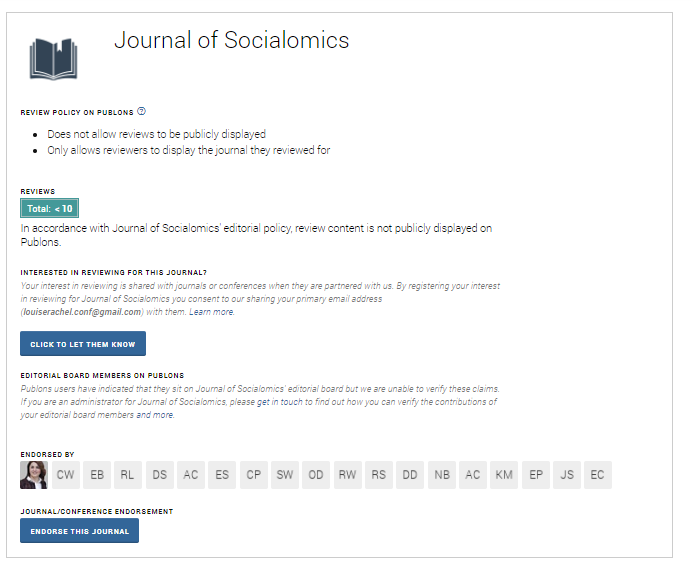Indexed In
- Open J Gate
- Genamics JournalSeek
- SafetyLit
- RefSeek
- Hamdard University
- EBSCO A-Z
- OCLC- WorldCat
- Publons
- Google Scholar
Useful Links
Share This Page
Journal Flyer

Open Access Journals
- Agri and Aquaculture
- Biochemistry
- Bioinformatics & Systems Biology
- Business & Management
- Chemistry
- Clinical Sciences
- Engineering
- Food & Nutrition
- General Science
- Genetics & Molecular Biology
- Immunology & Microbiology
- Medical Sciences
- Neuroscience & Psychology
- Nursing & Health Care
- Pharmaceutical Sciences
Commentary - (2025) Volume 14, Issue 1
Computational and Statistical Approaches to Human Behavior Analysis
Fandi Khair*Received: 24-Feb-2025, Manuscript No. JSC-25-29185; Editor assigned: 26-Feb-2025, Pre QC No. JSC-25-29185; Reviewed: 12-Mar-2025, QC No. JSC-25-29185; Revised: 19-Mar-2025, Manuscript No. JSC-25-29185; Published: 26-Mar-2025, DOI: 10.35248/2167-0358.25.14.261
Description
Human behavior analysis is the scientific study of how people act, react and interact in various contexts. It aims to understand the underlying motivations, emotions, cognitive processes, and social influences that drive behavior. This field draws from multiple disciplines, including psychology, sociology, neuroscience, anthropology, and behavioral economics, to unravel the complexities of human actions. Analyzing human behavior is essential in diverse areas such as mental health, education, marketing, law enforcement, workplace management and social policy, helping to improve decision-making, predict outcomes, and facilitate positive change.
At its core, human behavior analysis examines both observable actions and the internal processes that precede them. These include thoughts, feelings, attitudes, beliefs, and intentions. Understanding behavior requires looking beyond what people do to why they do it, which involves exploring cognitive and emotional mechanisms. For instance, an individual’s decision to engage in healthy habits like exercising can be influenced by their knowledge of health benefits cognition, feelings of motivation or fear emotion, and social encouragement environment.
Cognitive-behavioral theories integrate these perspectives, suggesting that behavior is a product of both external factors and internal thought patterns. For example, a person’s response to stress depends not only on the stressful event but also on how they interpret and cope with it. Cognitive-Behavioral Therapy (CBT), widely used in clinical psychology, is grounded in this understanding to help individuals change maladaptive thoughts and behaviors.
Human behavior analysis also considers the influence of emotions, which can significantly impact decision-making and social interactions. Emotions like fear, joy, anger, and empathy shape behavior by affecting attention, motivation, and memory. Neuroscience research has illuminated the brain regions involved in emotional processing, such as the amygdala and prefrontal cortex, deepening our understanding of how emotions regulate behavior.
Social factors are equally critical in behavior analysis. Humans are inherently social beings, and their behavior is influenced by norms, roles, cultural values, group dynamics, and social identity. Social psychology investigates how individuals conform to group expectations, obey authority, and develop attitudes through socialization. Phenomena like peer pressure, social facilitation, and groupthink reveal how behavior can be altered in social contexts.
Technological advances have expanded the methods and scope of human behavior analysis. Digital footprints from social media, online browsing, and wearable devices provide rich data for behavioral insights. Big data analytics and machine learning enable researchers to detect patterns and predict behavior at individual and population levels. For instance, analyzing social media posts can reveal mood trends, consumer preferences, or early signs of mental health issues.
Despite its many benefits, human behavior analysis faces challenges. Human behavior is inherently complex, influenced by a multitude of interacting factors that are often difficult to isolate or quantify. Cultural differences can affect how behavior is expressed and interpreted, requiring culturally sensitive approaches. Ethical concerns arise regarding privacy, consent, and potential misuse of behavioral data, especially with emerging technologies that track and analyze personal information.
Conclusion
Human behavior analysis is a multidisciplinary endeavor that seeks to understand the multifaceted nature of human actions and interactions. By combining insights from cognitive processes, emotions, social influences, and developmental changes, it provides a comprehensive framework for explaining why people behave the way they do. Advances in technology and data analysis are enhancing the depth and accuracy of behavior insights, with applications spanning health, education, business, and security. As society becomes more interconnected and data-driven, human behavior analysis will continue to play a pivotal role in addressing individual and collective challenges, fostering well-being, and optimizing human potential.
Citation: Khair F (2025). Computational and Statistical Approaches to Human Behavior Analysis. J Socialomics. 14:261.
Copyright: © 2025 Khair F. This is an open-access article distributed under the terms of the Creative Commons Attribution License, which permits unrestricted use, distribution and reproduction in any medium, provided the original author and source are credited.


